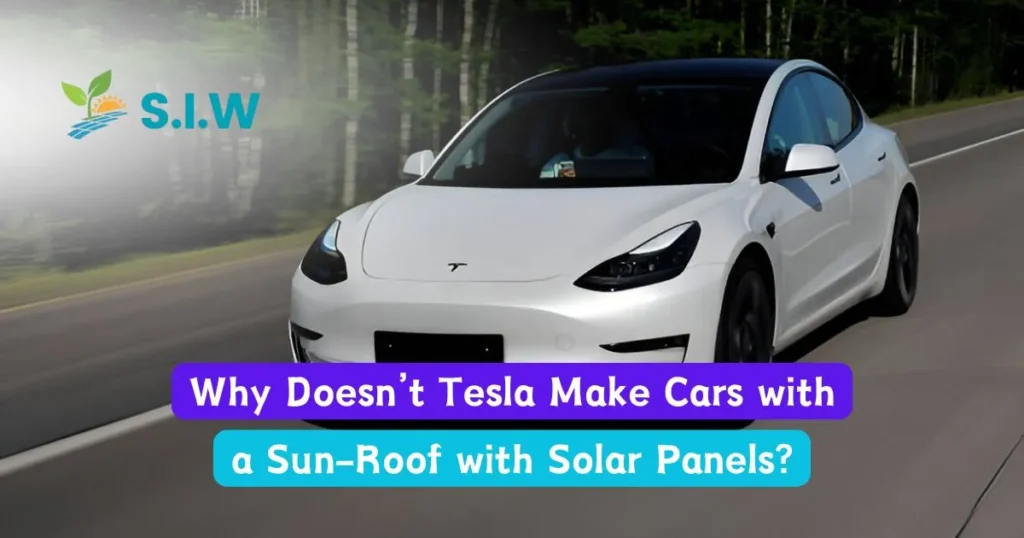Tesla has been at the forefront of innovation in the electric vehicle industry, consistently pushing the boundaries of technology and sustainability. However, one question that often arises is why Tesla, a leader in both electric vehicles and solar energy, hasn’t integrated solar panels into the sunroofs of their cars. In this article, we explore the various reasons why this seemingly obvious combination hasn’t been adopted by Tesla, despite their clear commitment to renewable energy.
Technical Limitations of Solar Panels on Vehicles
While the idea of integrating solar panels into car roofs sounds promising, the reality is much more complex. Solar panels, even the most efficient ones, are limited by the amount of energy they can generate. The surface area of a car roof is relatively small, which constrains the amount of sunlight that can be captured. Even under ideal conditions, the energy generated by these panels would be insufficient to power an electric vehicle like a Tesla for any significant distance.
Tesla’s Model 3, for example, has a battery capacity of approximately 75 kWh. To charge this battery fully using solar panels on a car roof, it would take days of continuous sunlight, assuming optimal conditions. Energy density and the efficiency of current solar technology, including solar batteries, simply do not allow for practical application in the context of electric vehicles. The energy generated might only be enough to power a few auxiliary systems, like the air conditioning or infotainment system, but not the vehicle itself.
Weight and Aerodynamic Considerations
Adding solar panels to the roof of a vehicle also introduces concerns regarding weight and aerodynamics. Solar panels are not lightweight, and the additional mass could reduce the efficiency of the vehicle by increasing the overall weight. This added weight would lead to higher energy consumption, thereby reducing the vehicle’s range—one of the key performance metrics that Tesla vehicles are renowned for.
Moreover, the aerodynamics of a vehicle are crucial in maximizing its efficiency. Tesla designs its cars to be as streamlined as possible to reduce drag and improve range. Adding solar panels to the roof could disrupt these carefully designed aerodynamics, leading to increased drag and, consequently, reduced range.
Cost-Benefit Analysis
From a business perspective, Tesla must consider the cost-benefit analysis of integrating solar panels into their vehicles. The additional cost of installing high-quality, durable solar panels on each vehicle would inevitably increase the overall price of the car. Tesla aims to make electric vehicles more accessible, and any increase in price could contradict this goal.
Furthermore, the benefits of such an addition are minimal compared to the costs. As discussed earlier, the energy generated by these panels would be negligible in the grand scheme of the vehicle’s overall energy needs. Tesla’s existing investment in supercharger networks and battery technology provides a more effective solution to range anxiety and charging convenience than solar panels ever could.
Alternative Solar Solutions
While Tesla may not be integrating solar panels directly into their vehicles, they are heavily invested in solar energy solutions through their subsidiary, Tesla Energy. Tesla offers solar panels and the Solar Roof, which are designed to power homes and businesses. These systems are far more effective at capturing and utilizing solar energy than a small panel on a car roof could ever be.
Tesla’s Powerwall technology also complements their solar offerings, providing a way to store solar energy for use when sunlight isn’t available. By focusing on these larger-scale solar solutions, Tesla is able to make a more significant impact on renewable energy adoption.
Potential for Future Innovations
While the current technology may not support the integration of solar panels into Tesla vehicles, it’s worth noting that innovation is a core part of Tesla’s identity. As solar technology advances, it’s possible that we may see more efficient, lightweight, and flexible solar panels that could be integrated into vehicles without compromising their performance. Tesla is likely monitoring these developments closely and may consider this option in the future if the technology becomes viable.
Conclusion
In conclusion, while the idea of solar panels on Tesla cars is intriguing, the current technological and practical limitations make it an unfeasible solution at this time. Tesla’s focus remains on optimizing battery technology, expanding their supercharger network, and providing larger-scale solar solutions for homes and businesses. As technology evolves, Tesla may revisit the idea, but for now, their approach reflects a careful balance between innovation, efficiency, and practicality.








